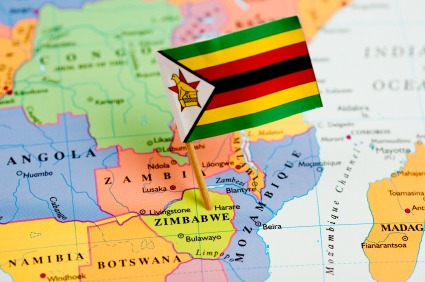Localising the ‘leave no one behind’ promise in Zimbabwe
This post is written by Peter Bare, Sightsavers’ Programme Manager in Zimbabwe.
In September 2015 at the 70th General Assembly of the United Nations, the world finally agreed on 17 goals that would propel the world to the next level. But the next 15 years will have to be filled with more than rhetoric.
To African countries, the Sustainable Development Goals (SDGs) 2015-2030 present an opportunity to continue with the unfinished business left by their predecessor, the Millennium Development Goals. And the year 2030 for Zimbabwe (and potentially the rest of Africa) will be a great year – if we do not wait to track our progress, but seize the moment and lay a strong foundation now.
Zimbabwe conducted a very encouraging multi-stakeholder meeting soon after September 2015, where the local United Nations SDG taskforce met MPs, civil society organisations and the private sector to discuss ways of localising the SDGs. The meeting also highlighted the need to ensure that bills passing through parliament conform to and address the 17 SDGs.
Parliamentarians were urged to raise awareness in their own constituencies, and the Minister of Economic Development discussed aligning the SDGs to the Zimbabwe Agenda for Sustainable Socio-Economic Transformation (ZIMASSET).
Unfortunately ZIMASSET, while a comprehensive, well-articulated plan, is weak on monitoring and evaluation. It lacks a framework for tracking progress and there is no budget allocation for its implementation. There’s a lot of work to be done if we are to ‘leave no one behind’ and meet the 17 goals (with their combined 169 targets) that achievement will be measured against.
A strong political will at the highest level is needed. Political parties and the government have to walk the talk; the same zeal that leaders brought back from New York has to cascade down to the lowest level of leadership in Africa. The political manifesto has to align with the 17 pointers of Agenda 2030. It is this SDG alignment with the National Development Plan that will put Zimbabwe on course to meet the goals.
On 19 July 2016, barely seven months after the SDGs launched, UN Secretary General Ban Ki-moon released the first report on them. This highlighted the importance of baseline data. For Zimbabwe in particular to know where it is now, we need this data – it will show us who we are ‘leaving behind’. We need to make this baseline data available as early as possible.
Lamentably, most African countries failed to achieve the MDGs, simply because they lacked policy and institutional coherence in their implementation – we cannot let this be the case for Zimbabwe and the rest of Africa during the next 15 years. There must be serious reflection on the institutional structure that was present during the MDGs to evaluate strengths and weaknesses – this will help make sure that structures and policies are put in place for the SDGs that consistently maintain economic growth, promote good governance and uphold the rights of citizens




